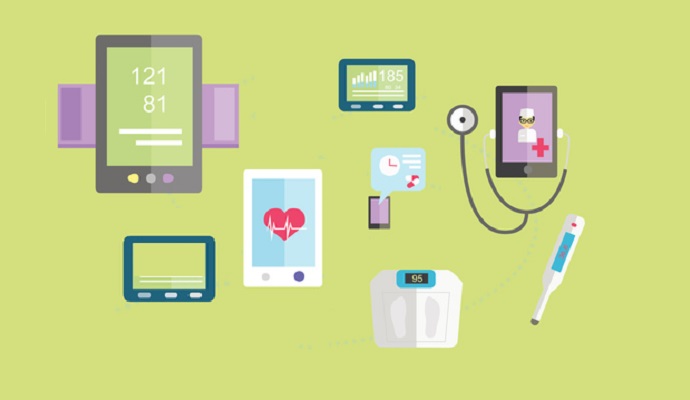How mHealth Gets the Conversation Going
A nationwide home patient monitoring project finds that mHealth devices improve health management and get the doctor and patient talking to each other.

- Not only do digital health devices gather vital physiological data at home – they also help spark the conversation in the doctor’s office.

That was one of the more surprising take-aways from a home blood pressure monitoring project conducted last year at the Billings Clinic, part of a national study conducted by the American Medical Group Foundation and Withings. Officials at the Montana health system said the program not only helped patients manage their blood pressure, it also improved patient engagement.
“It really opened up the conversation,” says Barbara Holloway, RN, BSN, part of the clinic’s Center for Clinical Translational Research. “When they were taking (the wireless blood pressure monitor) in to see their doctor, it gave them something to point to and show (their readings.) And the doctors really liked that feedback from patients.”
The Billings Clinic, a three-state health system, part of the Mayo Clinic Care Network and a recognized Accountable Care Organization, was one of four health systems to take part in the project, run alongside the AMGF’s “Measure Up/Pressure Down” campaign. Along with Wilmington Health, Cornerstone Health Care and the Community Physician Network, the Billings Clinic equipped selected patients dealing with hypertension with a Withings Wireless Blood Pressure Monitor and asked them to take regular readings.
The devices synched with the patient’s iOS or Android device and downloaded real-time data to a web portal. The care team then used that data to create a personalized care management plan, which might include more frequent trips to the doctor, medication or lifestyle changes or even bringing in a specialist.
Over the 18-month program, involving some 150 patients, blood pressure control rates improved from 38.6 percent to 70 percent. At the Billings Clinic, Holloway said average systolic readings of the 37 participants dropped from 148.8 to 139.6 and average diastolic readings dropped from 92.5 to about 85.
“Outcomes from this pilot project reinforce the incredible value that home blood pressure monitoring offers to patients and their healthcare teams,” Cedric Hutchings, CEO and co-founder of Withings, said in a September 2015 press release announcing the program’s results. “With the ability to continually monitor progress, make changes where necessary, and gain encouragement when seeing successes, the Withings Wireless Blood Pressure Monitor has helped many participants gain control over their personal health and establish richer relationships with their healthcare professionals.”
Holloway says the program’s success goes deeper than that.
“They used to just bring in a piece of paper with a list a readings; what could a doctor do with that?” she said. “With this, they felt like that could be more active in their (care plan) and manage themselves better.”
And that helped improve the collaboration between patient and provider, enabling both to agree on a plan that included medication management, exercise and diet. If a patient is more invested in a care plan, it stands to reason that they’ll follow it better.
It even changed some perceptions of how a patient and doctor should interact. Holloway said one patient had a tough time convincing her doctor that her blood pressure was fluctuating during the day, until she and her doctor reviewed the readings taken by the device. This helped both patient and doctor have a better conversation about what it takes to manage one’s blood pressure.
“Some (of the patients) even said, ‘You know, he’s finally paying attention to me,’” Holloway said.
